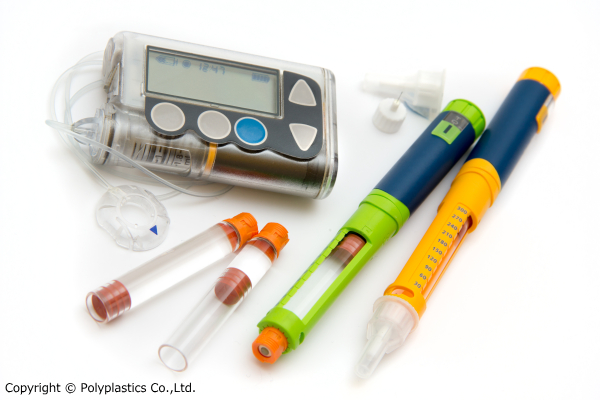High-Flow POM for Medical and Healthcare Industry
Polyplastics has expanded its Duracon POM PM series with the addition of high-flow grade PM27S01N
Japan’s Polyplastics Group (U.S. office in Farmington Hills, Mich.) is expanding its Duracon polyoxymethylene (POM) PM series portfolio with the development of a new high-flow grade for drug contact and delivery applications for the medical and healthcare market. New grade PM27S01N reportedly offers reduced wall thickness, miniaturization, and lower weight for various medical devices that are becoming increasingly complicated and highly functional.
PM27S01N is said to deliver global medical and food regulatory compliance. In a changing and growing marketplace, medical device manufacturers and end users demand high-quality materials and reliable suppliers, according to Polyplastics. The new grade meets regulatory compliance requirements including ISO10993 and USP Class VI biocompatibility/cytotoxicity, FDA Drug Master File (DMF) and Device Master File (MAF), and EU 10/2011 and FDA food-contact 21 CFR 177.2470.

The material adheres to strict quality management systems including conformity to VDI guideline, VDI 2017 medical-grade plastics. It also provides full traceability of processes and products, and production management based on GMP principle. Polyplastics has positioned itself to provide uniform quality and global supply.
Polyplastics’ Duracon PM series, which also includes Duracon PM09S01N, a standard viscosity workhorse grade, complements the company’s Topas cyclic olefin copolymer (COC) product, a high-purity material for a range of medical applications. The company offers medical device manufacturers extensive data on the long- term reliability of its materials. Customized data on extraction, moldability, durability, slip and wear, and other key attributes is also available.
Related Content
-
Automotive Awards Highlight ‘Firsts,’ Emerging Technologies
Annual SPE event recognizes sustainability as a major theme.
-
Prices Up for All Volume Resins
First quarter was ending up with upward pricing, primarily due to higher feedstock costs and not supply/demand fundamentals.
-
The Fantasy and Reality of Raw Material Shelf Life: Part 1
Is a two-year-old hygroscopic resin kept in its original packaging still useful? Let’s try to answer that question and clear up some misconceptions.







